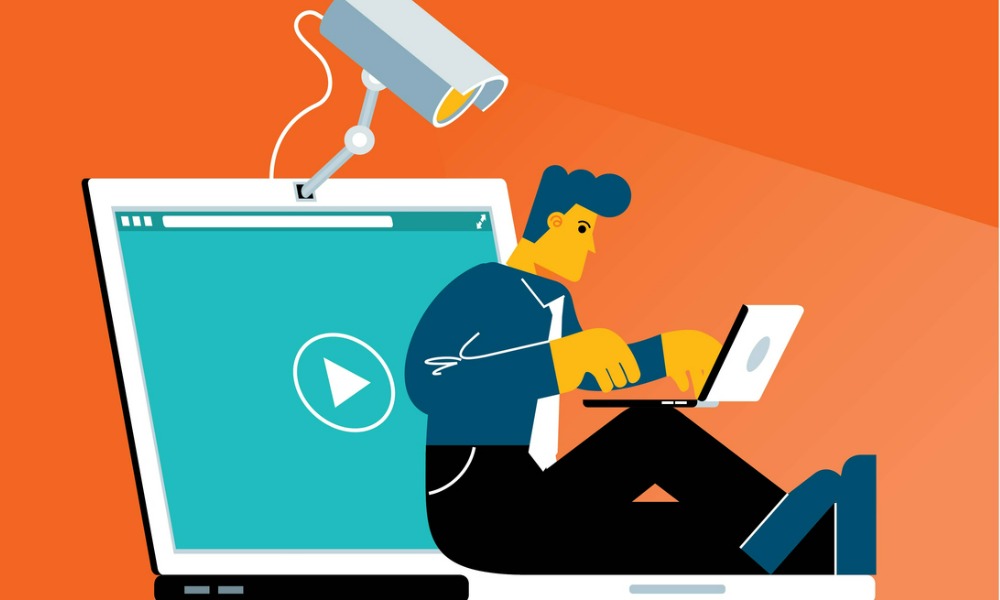
To combat potential downsides to employee wellbeing, academic offers insights and tips for employers

Pandemic-led increases in remote working have seen a corresponding increase in electronic monitoring tools for remote staff across many professions and countries.
But could these tools have a negative impact on worker well-being?
Dr Debora Jeske, an HR professional and adjunct lecturer at University College Cork, took a deep dive into the research.
“Certain and carefully collected data generated by employee monitoring tools — with employee knowledge and consent — can be a useful resource for organizations,” says Dr Jeske.
“For example, some data can help track working hours and identifying issues around and predictors of presenteeism, overwork and exhaustion. Such information can help management address well-being issues.”
But there are also downsides, as closely monitored employees often fear the punitive consequences of being watched this way.
“They also report higher stress and emotional exhaustion, high tension and anxiety, negative attitudes and emotions when monitored. The monitoring of employees working at home also creates and raises privacy concerns,” Dr Jeske says.
Left unchecked, this can translate to an increase in errors, which in turn can delay projects, along with underperformance due to exhaustion, and the adoption of undesirable work practices.
She also notes that few organizations work with their employees to evaluate the data and assess potential areas of improvement to date, relying instead on performance indicators that are not necessarily reflecting the full picture or performance.
“There is certainly room for improvement on how these tools are employed and how they are used,” Dr Jeske says.
Monica Watt, CHRO at ELMO, previously told HRD: “We need to distinguish the difference between monitoring performance of an employee and monitoring the behaviours of an employee.
The purpose for why electronic performance monitoring is being adopted is a critical factor in the employee experience, she says.
“It can affect attitudes and emotions negatively – particularly among employees — or positively, as managers often are the ones selecting these tools to help them with team performance and workflow management.”
The body of research Dr Jeske reviewed for her paper suggests companies who adopt monitoring tools for cost and risk reduction purposes run a real risk of having employees resent the implication management and cannot trust them to act in the best interest of the company — thus the need for tight monitoring.
That resentment goes hand in hand with decision-making that excludes employees from having any say in the adoption of these tools or the invasiveness, regularity and pervasiveness of the monitoring.
Monitoring that involves employee consent and participation, and is driven by employers looking to increase performance and identify room for development, can have positive outcomes, she says.
“[It] can help managers and HR support employees and provide timely developmental feedback to help optimise performance.”
Involving employees in the process can also make employees feel trusted and retain some degree of autonomy. It can also help safeguard their privacy while they are working from home — an aspect Dr. Jeske notes become important to many remote workers during the pandemic.
The use of newer technologies to monitor workers has become so prevalent that regulators in the UK and US are facing growing calls to restrict employers’ power to track their staff.
According to Dr Jeske, there are a number of ways businesses can counteract the negatives of electronic monitoring and support employee wellbeing:
Digital ergonomics training and break reminders: Employee monitoring can contribute to sedentary behaviour because of the pressure to be present in front of various monitoring devices, which can contribute to developing musculoskeletal issues.
“Ergonomics training can be very helpful to ensure employees do not develop these issues. Reminders to employees can be helpful to inform them about screen and break times,” she says. “When employees do not use their breaks for longer periods of time, it may also be time to re-evaluate the workload managers give or identify other types of interventions – such as training on the job.”
Provide online health-promoting and social support interventions: “Remote employees often feel less connected to others, while monitoring also increases anxiety. Access to online, daily live workouts, and weekly live well-being chats with health professionals, for example, could be very helpful. During these, employees need to be able to pause monitoring due to the potential confidentiality of their questions,” says Dr Jeske.
Supportive, health-promoting leadership behaviours: Good practices include role-modeling behaviours — such as expressing gratitude, sharing experiences, and disclosing struggles — can help remote workers build stronger relationships and encourage staff to exchange strategies on how to cope with certain challenges.
Managers’ leadership style and performance monitoring and feedback practices can directly and indirectly impact employee performance, well-being and health over time, she says.
“Occupational and other health professionals can and do play an important role in educating employees and managers about time management, boundary setting, health breaks and coping strategies,” says Dr. Jeske.